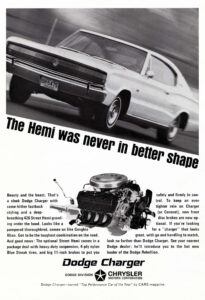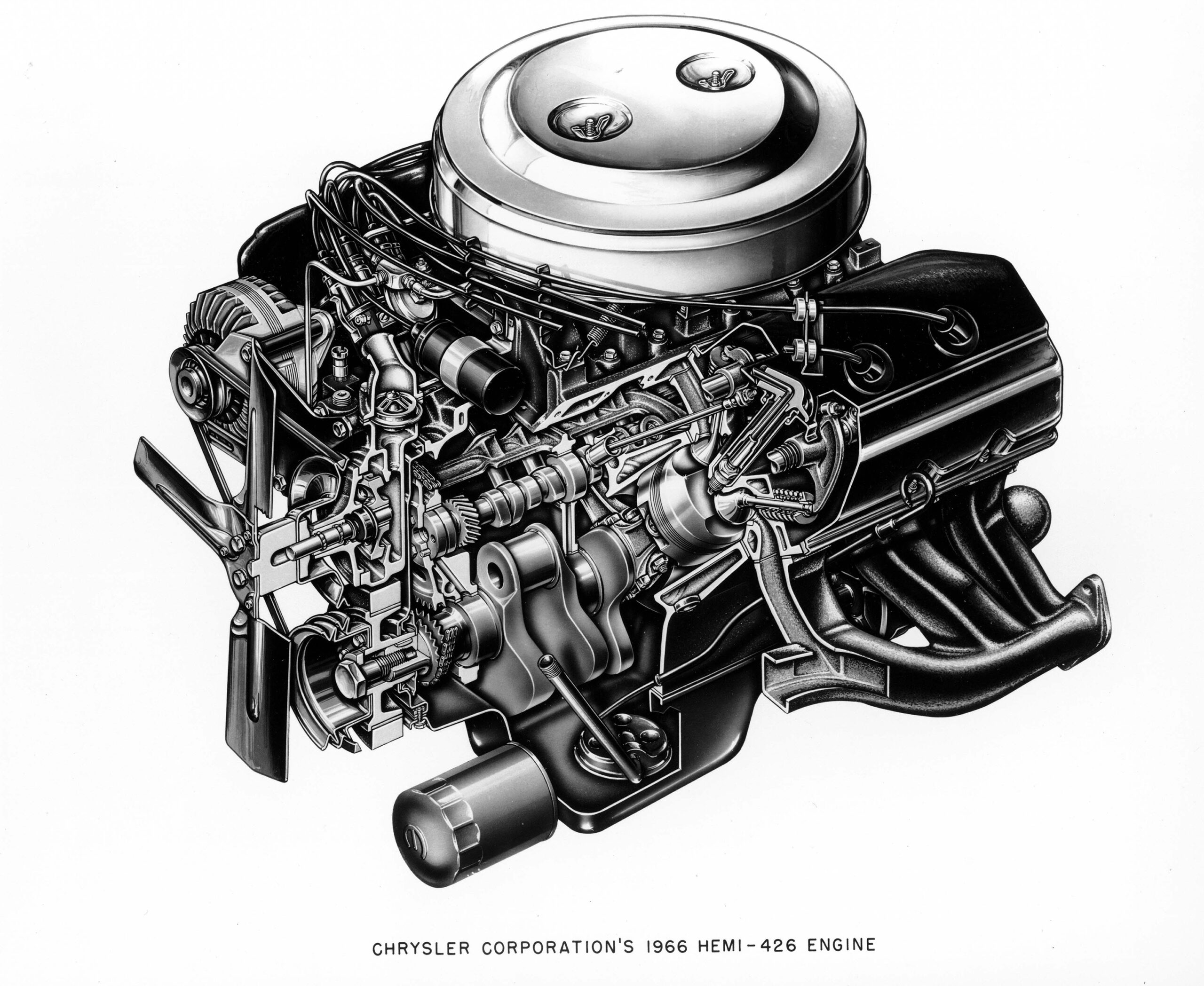The Dodge Charger debuted in 1966 as a midsize sporty car that would compete with the Rambler Marlin, Ford Mustang, and Plymouth Barracuda

The first generation 1966 Dodge Charger introduced a fastback roofline and pot-metal “electric shaver” grille. (Photography courtesy of Stellantis)
During the early-1950s, automakers were exploring new ideas in the personal luxury and specialty cars.
The Hemi engine package included heavy-duty suspension, four-ply nylon Blue Streak tires, and “big” 11-inch brakes. According to Wikipedia, Chrysler had been slow to enter the specialty car market, but tapped its Dodge Division to enter the marketplace. Its first offering would be a midsize B-bodied Dodge Charger. It would fit between the “pony car” Ford Mustang and “personal luxury Ford Thunderbird.
The design focus was to create a fastback look while sharing as much existing company hardware as possible. The result was the Coronet-based Charger. The exterior styling was, in general, a departure from Dodge’s mainstream cars. Introduced in mid-1966, the Charger would compete with the Rambler Marlin, Ford Mustang, and Plymouth Barracuda.

The 1965 Dodge Charger II Concept created the desired fastback look shared much existing company hardware.
The interior design of the Charger was different from all other cars, according to the Wiki page. It debuted a full-length center console and “all bucket seating” front and rear. Also an innovation, the rear pseudo-buckets could be folded to create more cargo space through the enormous rear hatch.
The Hemi Halo
The Charger wasn’t intended to compete head-to-head in performance with pony cars but was available with Chrysler’s famed 426 Hemi V8.
On Jan. 1, 1966, The 1966 Charger had its big public debut at the Rose Bowl as the new “Leader of the Dodge Rebellion.” The Charger’s debut was also followed midyear by a new street version of the 426 cubic-inch, 7.0-liter Chrysler Hemi engine.

The Charger wasn’t intended to compete head-to-head in performance with pony cars but was available with Chrysler’s famed 426 Hemi V8.
With the Charger, Dodge had a new model to build a performance image with this engine.
The Charger was designed by Carl “CAM” Cameron and introduced a fastback roofline and pot-metal “electric shaver” grille. Its fully rotating headlights were a feature not seen on a Chrysler product since the 1942 DeSoto. The fastback design ended over a full-width six-lamp taillight in the rear with chromed and wide-spaced “C H A R G E R” lettering.
Dodge Charger Powertrains
According to the Wiki report, Charger powertrains for 1966 consisted of V-8s with three choices of transmission.
Four engines were offered:
- 318 cubic-inch 5.2-liter with a two-barrel carburetor for the base-model Charger;
- 361-cubic-inch, 5.9-liter two-barrel;
- 383 cubic-inch, 6.3-liter with a four-barrel carburetor;
- And the new 426 Street Hemi. Only 468 Chargers were built with the 426.

The transmissions for the 1966 Charger:
- Three-speed steering-column mounted manual with the base engine,
- Console-mounted four-speed manual;
- Three-speed automatic.
Total 196 Dodge Charger production came to 37,344 units for the mid-model year introduction.


